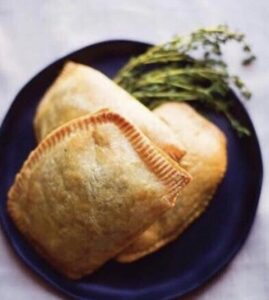How to Start a Food Truck: A Comprehensive Guide
Want to start a food truck?
Starting a food truck requires careful planning, strategic decision-making, and an understanding of the industry.

With the rising popularity of food trucks as a convenient and trendy dining option, many aspiring entrepreneurs are eager to jump into the mobile food business. However, starting a food truck requires careful planning, strategic decision-making, and a solid understanding of the industry. In this guide, we’ll explore the essential steps to start a food truck venture, featuring insights from Alison Rosario and Conroy Outar, owners of JA Patty, a thriving food truck in Rhode Island.

Business Planning: Start a Food Truck
Before hitting the streets with your food truck, it’s crucial to develop a comprehensive business plan that outlines your concept, target market, financial projections, and operational strategy. Here are some key considerations to include in your business plan as you start a food truck:
- Define Your Concept: Determine the type of cuisine you’ll serve and what sets your food truck apart from the competition. Alison and Conroy’s vision for JA Patty was to introduce authentic Jamaican flavors to Rhode Island in a way that is still accessible and approachable to their community.
- Research Your Market: Conduct thorough market research, leveraging tools such as surveys and industry reports, to identify potential customers, accurately assess demand for your offerings, and evaluate the competition in your area.
- Create a Budget: Estimate your startup costs, including the purchase or rental of a food truck, equipment, licenses, permits, and initial inventory. Consider factors such as fuel, maintenance, and insurance expenses. Alison and Conroy juggled multiple jobs while launching JA Patty to make the financials work. They emphasized the importance of accessing funding and information resources.
- Market Analysis: Research your target market, competitors, and potential locations to identify opportunities and challenges. Attend food truck events, network with fellow entrepreneurs, and gather feedback from potential customers. Alison and Conroy participated in networking events and programs like the Brewing the American Dream Bootcamp to gain valuable insights and support from others in the food and beverage industry.
- Set Financial Goals: Determine your pricing strategy, revenue targets, and break-even point to ensure profitability.
Finding Small Business Funding
Securing financing for your food truck venture is a crucial step in turning your business idea into reality. Every business should evaluate their unique situation and needs when choosing a potential source of funding. Consider the following options for funding:
- Personal Savings: Use your savings or personal funds to cover startup costs and initial expenses. Alison and Conroy juggled day jobs for years while they were launching JA Patty before they were able to go full time with the business.
- Small Business Loans: Explore loan options from banks, credit unions, or online lenders to finance your food truck purchase or operational expenses. Accion Opportunity Fund offers small business loans to established businesses in need of capital.
- Crowdfunding: Launch a crowdfunding campaign on platforms like Kickstarter or Kiva to raise capital from supporters and potential customers.
- Investors: Seek investment from angel investors, venture capitalists, or friends and family members who believe in your business concept.
Finding a Truck
Choosing the right food truck is essential for the success of your business. Consider factors such as size, layout, kitchen equipment, and mobility. Whether you opt for a new custom-built truck or a used vehicle that requires customization, prioritize functionality, durability, and compliance with health and safety regulations. Research the following when purchasing a food truck:
- Size and Layout: Determine the optimal size and layout of your truck by creating a visual diagram that incorporates your menu offerings, necessary cooking equipment, and storage needs, ensuring an efficient workflow.
- Condition and Maintenance: Inspect the truck for any mechanical issues or structural damage, and ensure it meets health and safety regulations.
- Customization: Consider customizing the truck with branding, signage, and features that reflect your brand identity and attract customers. When you start a food truck, you are also starting a brand.
- Cost and Financing: Compare prices from different sellers and explore financing options, such as leasing or financing through a dealership. Based on your business plan and financial projections, know what you can afford to pay each month before you start shopping.

Licensing and Permits
Obtaining the necessary licenses and permits is crucial to start a food truck and operate it legally. Research and comply with local, state, and federal regulations regarding food handling, sanitation, zoning, and business operations. Alison and Conroy emphasized the importance of understanding and adhering to regulatory requirements while scaling your business. Here’s what you’ll need:
- Business License: Register your food truck business with the appropriate local, state, and federal authorities.
- Health Permit: Obtain a health permit from your local health department to ensure compliance with food safety regulations.
- Parking Permits: Secure permits for parking and vending in designated areas or events, such as festivals, markets, and private venues.
- Food Handler’s Permit: Ensure that you and your staff obtain food handler’s permits or certifications to handle and prepare food safely.
Best Food Truck Locations
Choosing the right locations to park your food truck can significantly impact your sales and visibility. Identify high-traffic areas, popular events, office complexes, and entertainment venues where your target customers gather. Experiment with different locations, schedules, and promotional tactics to attract and retain customers. Consider these factors when selecting locations:
- Target Audience: Identify areas with high foot traffic, such as downtown business districts, college campuses, or popular tourist destinations, where your target audience is likely to be.
- Events and Festivals: Participate in local events, festivals, and food truck rallies to reach a larger audience and generate buzz for your business.
- Collaborations: Partner with local businesses, breweries, or community organizations to host pop-up events or food truck roundups.
- Social Media: Utilize social media platforms to communicate your location schedule, menu updates, and special promotions to followers and customers.
 Marketing Strategies
Marketing Strategies
Effective marketing is key to attracting customers and building a loyal fan base for your food truck. Utilize social media platforms, local events, food festivals, and partnerships with other businesses to promote your brand and menu offerings. Engage with your audience, solicit feedback, and cultivate a strong community around your food truck. Consider these marketing strategies:
- Branding and Logo Design: Develop a strong brand identity and logo that reflects your unique concept and resonates with your target audience.
- Social Media Marketing: Establish a presence on social media platforms like Instagram, Facebook, and Twitter to showcase your menu items, engage with customers, and promote upcoming events.
- Website and Online Ordering: Create a mobile-friendly website where customers can view your menu, place orders online, and find information about your food truck schedule and locations.
- Email Marketing: Build an email list of customers and subscribers to send updates, promotions, and special offers directly to their inbox.
- Collaborations and Partnerships: Collaborate with local influencers, bloggers, or businesses to reach new audiences and increase visibility for your food truck.
Mission and Brand
With over a decade of experience in the food industry, Alison Rosario and Conroy Outar, owners of JA Patty, illustrate how their expertise in Caribbean cuisine has allowed them to effectively bridge cultural divides and foster community connections through their food truck. By sharing authentic Jamaican flavors and incorporating feedback from their local community, they’ve built a successful food truck business that celebrates diversity and inclusivity. JA Patty evolved their logo over time, to reflect their most popular product, their patties.

Here’s how you can draft your own mission statement and make sure your mission comes through in your brand:
- Understand Your Values: Begin by identifying the core values and beliefs that drive your business. What principles are most important to you and your team? Your mission should align closely with these values to create authenticity and resonance.
- Define Your Purpose: Clarify the purpose or reason for your business’s existence beyond making profits. Consider the impact you want to have on your customers, community, or industry. Your mission should reflect this purpose and inspire both internal stakeholders and external audiences.
- Craft a Clear Mission Statement: Develop a concise and compelling mission statement that encapsulates your values, purpose, and goals. Keep it simple, memorable, and impactful. A well-crafted mission statement serves as a guiding light for decision-making and helps stakeholders understand the essence of your brand.
- Integrate Your Mission into Branding: Incorporate your mission into your brand identity, messaging, and visuals. Your mission should be evident in your logo, website, marketing materials, and customer interactions. Consistent reinforcement of your mission strengthens brand recognition and fosters customer loyalty.
- Communicate Authentically: Communicate your mission authentically and transparently with your target audience. Share stories, testimonials, and examples that illustrate how your business lives out its mission in action. Authenticity builds trust and credibility, fostering stronger connections with customers and stakeholders.
A clear mission is crucial for business success as it serves as a guiding light, directing strategic decisions and daily operations. By differentiating your brand, engaging employees, building customer loyalty, and driving growth, a well-defined mission creates a strong foundation for sustainable success. It resonates with customers, inspires employees, and attracts stakeholders who share your vision, fostering a sense of purpose that propels your business forward.
Community
Community support has been instrumental in JA Patty‘s success, with customers providing valuable feedback to refine their menu offerings and business operations. Alison and Conroy emphasize the importance of community engagement and collaboration in shaping their vision for a brick-and-mortar establishment. Here are some great ways to connect with your local community:
- Engage with Local Events: Participate in community events, festivals, and farmers’ markets to connect with locals and showcase your food truck. Engaging with these events not only exposes your business to a broader audience but also allows you to build relationships with other vendors and community members.
- Host Pop-Up Events: Organize pop-up events in different neighborhoods or community spaces to introduce your food truck to new audiences. These events create buzz, generate excitement, and provide opportunities for face-to-face interactions with customers, fostering a sense of community around your brand.
- Collaborate with Local Businesses: Partner with nearby businesses, such as breweries, coffee shops, or retail stores, to cross-promote each other’s offerings. Collaborative events, joint promotions, or co-branded products can strengthen ties within the community and attract new customers to your food truck.
- Support Local Causes: Get involved in local charity events, fundraisers, or community initiatives to give back to the neighborhoods you serve. Whether it’s donating a portion of your sales, sponsoring an event, or volunteering your time, supporting local causes demonstrates your commitment to the community and builds goodwill among customers.
- Utilize Social Media and Online Platforms: Leverage social media platforms and online communities to engage with your audience, share updates about your food truck, and foster a sense of community online. Encourage customers to share their experiences, photos, and reviews, and respond to their feedback promptly to cultivate a loyal and engaged following.

To start a food truck business requires passion, perseverance, and a willingness to adapt to challenges and opportunities along the way. By following these essential steps and learning from the experiences of entrepreneurs like Alison and Conroy, you can embark on your own journey to culinary entrepreneurship with confidence and determination.
Take the first step! Soon, you’ll be well on your way to launching a successful food truck business that delights customers, drives sales, and leaves a lasting impression in the competitive mobile food industry. So, roll up your sleeves, fire up the grill, and get ready to embark on an exciting culinary adventure with your very own food truck!